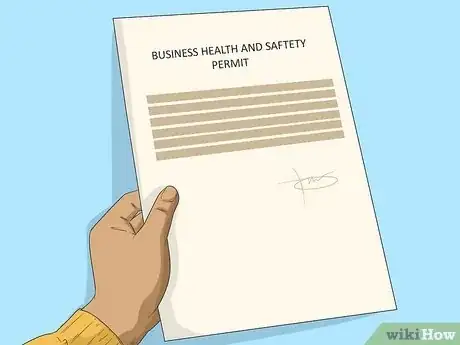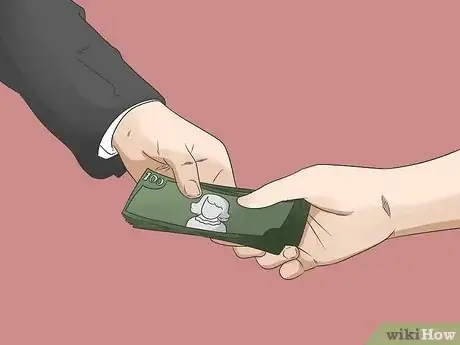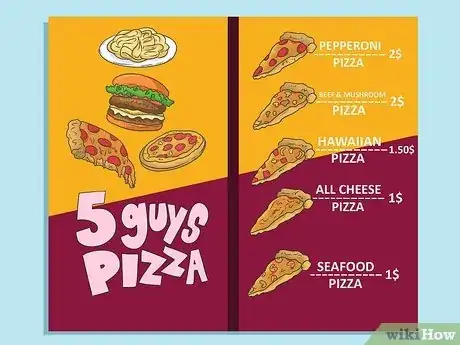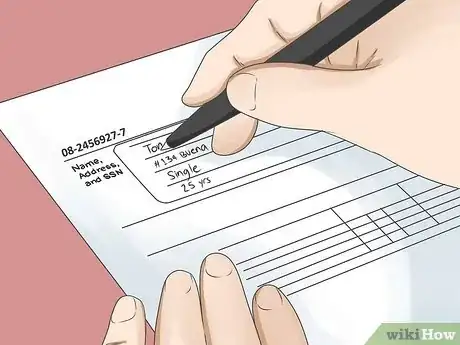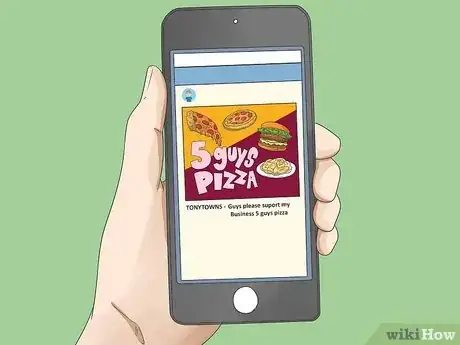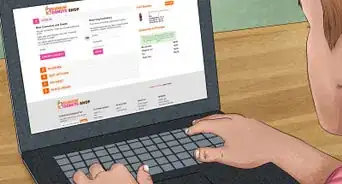This article was co-authored by wikiHow Staff. Our trained team of editors and researchers validate articles for accuracy and comprehensiveness. wikiHow's Content Management Team carefully monitors the work from our editorial staff to ensure that each article is backed by trusted research and meets our high quality standards.
There are 21 references cited in this article, which can be found at the bottom of the page.
wikiHow marks an article as reader-approved once it receives enough positive feedback. This article has 14 testimonials from our readers, earning it our reader-approved status.
This article has been viewed 253,499 times.
Learn more...
Over the past few decades, the prepared food industry has boomed as consumers increasingly rely on quick and easy meals to accommodate their busy schedules. Pizza, one of the most popular prepared foods, can be tailored to fit numerous tastes and has become a staple product of thousands of take-out and delivery pizza businesses. However, it's important for any entrepreneur to be aware that the majority of new prepared food businesses fail in their first year due to lack of essential business strategy and management skills.
Steps
Acquiring Training and Qualifications
-
1Gain culinary experience. Though you don't need any certification to start a pizza business, it's a good idea to attend a culinary trade school where you'll learn to cook more than pizza. Offering additional dishes on the menu could attract more customers for your own pizza business.
- Whether you actually attend culinary school or spend years working in a pizzeria, the important thing is to gather the experience you’ll need to help your business be successful. This could be done through formal education or through hands-on experience.[1]
- Some pizza chefs recommend traveling to Italy for an apprenticeship to learn the original art of making delicious pizza.
-
2Take some business classes. Even though you will be involved in the food industry, it is still important to have some kind of business savvy under your belt. You will be responsible for ensuring your business runs smoothly and providing your employees with reliable income. So it will be beneficial for you to gain some insight on the business aspects of running a pizza place.Advertisement
-
3Get experience in the industry. Check out other pizza businesses and see how they run. Spend some time learning the ropes at another pizza business and do your research. The insights you'll gain about not only how to make a good pizza, but also how to run a business, will be useful for your own endeavor.[2]
Coming Up With a Plan
-
1Figure out what kind of pizza place you want to open. Write a business plan that includes a description of your pizza business, the market you intend to sell to, your marketing strategy, projected revenue, taxes, and start-up costs.[3]
- There are many types of pizzerias, so spend some time thinking about what kind you want to create. There are family-style pizza joints, pizzerias with traditional wood stoves, buffet style pizza places, pizza by the slice, among others. You should also choose whether you want to offer delivery service or dine in and take out only.[4]
- There are also many styles of pizza to choose between – like Chicago-style deep dish, Sicilian, Neopolitan, thin crust, gourmet, etc.[5]
- Deciding what kinds of food you want to serve is important, but remember that most pizza consumers prefer quality over quantity.[6]
- You will also need to decide on what complementary food to serve. You may want to include salads for your more health-conscious customers. Or maybe you’ll want to include an excellent dessert menu with tiramisu and flan. Some more common menu items at pizza restaurants are varieties of pasta dishes, breadsticks, calzones.
-
2Figure out a way to set your business apart. As customers, people are overwhelmed with options for eating out. Why should they choose your restaurant? Think about what you can do to make your restaurant stand out from the crowd. Maybe this means coming up with a cool decorative theme. Maybe it means offering over-the-top customer service every day. Maybe it means you initiate some kind of gimmick like unlimited free drinks if they buy a special cup from your store. Whatever your decision, you need to choose something that will make your customers want to come back to your business (and to pick it in the first place).
-
3Choose between a franchise or an independent operation. While buying into a franchise definitely has its perks (already established name brand with loyal customers), going independent means that you have full control over your business and your finances.
-
4Choose a logo. Your logo is a very important part of branding your product/business. [7] Create a logo (or hire a graphic designer to do so) that is aesthetically pleasing and memorable, but make sure that the logo clearly represents what kind of business you are. People are more attracted to logos that are easy to decipher than those that seem unrelated to a topic.
Choosing a Location
-
1Enlist the help of a realtor. Getting the help of a realtor as you look for the perfect place to open your business will make your life a lot easier. Realtors are experts at choosing locations and they will have advice to guide you in your choice.
- Try to choose a realtor that has experience with commercial property, especially in dealing with restaurant locations.
- When choosing a location, it is important to know the area and keep your expected clientele in mind. For example, if you choose a location in a low-income area and decide to open a gourmet pizza place with expensive pies, your business may suffer.[8]
-
2Look at available properties in your budget. Make sure you keep your budget in mind as you search for properties. Think about what you can reasonably afford (remembering that it will probably take time for you to start making money from your business) and only look at locations in that price range. Also consider any additional costs like required renovations, decorating, and taxes.[9]
- Your pizza business itself may require some renovations – like installing wood pizza ovens or additional seating for customers.
-
3Think about visibility and access. Choose a location for your pizza business that is accessible, visible, and provides plenty of traffic to attract customers. Check with your city to see if it's zoned for a food company before you sign any lease agreement.[10]
- A good location is crucial, especially for a successful restaurant. Because pizza is such a popular food, a great location for your pizzeria would be in high traffic areas – like busy downtown streets, near shopping malls, close to college campuses, etc.
-
4Make sure you are compliant with all laws. Schedule an appointment with your local health and safety authority to check your location. If all is in compliance with health and safety regulations, you will be issued a permit that allows you to conduct business.[11]
- Additionally, keep in mind that you will need to acquire a liquor license if you want to be able to serve alcohol at your pizza establishment. This is another thing you will need to look into with your local health and safety authority, as regulations vary from state to state.
- If you are interested in starting a pizza business in your home, you can do so as long as you make sure you apply for a proper food license.[12] Without this license, it will be illegal for you to prepare and serve food to people for money – so don’t skip this step. Check with your local city hall to find out exactly what attaining the license entails since regulations can vary from place to place.
Acquiring Financial Backing
-
1Determine how much startup money you need. Think about all of the costs associated with running your business and how long you think it will be before you start turning a profit. Typically, new businesses don’t make money until after the first year. You will probably need to invest a lot of time and money before the business starts showing returns.
- These costs include rent and utilities at your location, equipment costs, supply costs, advertising fees, employee salaries, among other things.
-
2Get a business loan. Go to your bank and see if you can get approved for a business loan. You will need to provide the loan officer with a detailed business plan including expected costs and the eventual rate of return as well as projections regarding eventual profit.
- Additionally, look into grants and loans from the Small Business Administration.[13]
- Check out Get a Business Loan, Get a Small Business Loan, or Get SBA Small Business Loans for more information.
-
3Check out what support your city offers for small businesses. Many cities offer financial support for small businesses in their area. You should go to your local chamber of commerce and find out what kind of assistance you are eligible for.[14]
-
4Borrow from private investors. Obtain the capital you need from private investors. These are people who are willing to finance your business.
Preparing the Business
-
1Acquire the necessary equipment. Buy equipment for your pizza business. You'll need a refrigerator and freezer, gas ovens, a dough mixer, a butcher block table, pans and racks, measuring cups, flat bottom ladles, pizza boxes, napkins, and if you're planning to deliver pizzas, a delivery vehicle.[15]
- This list, however, is not comprehensive. You should consider asking someone who already owns a pizza business for a complete listing of all the equipment they use on a daily basis in their business.
-
2Create a menu. Decide what kinds of foods and beverages you will sell and create a menu. You should consider including assorted pizzas as well as other Italian dishes. Be clear and plan the design carefully. Make sure you proof your menu for errors.[16]
-
3Hire employees. You’ll need a dependable staff to maintain a smoothly running business. Interview employees, and hire those that are reliable, personable, and efficient.[17]
-
4Fill out all necessary forms and applications.[18] You should apply for an employer's identification number (EIN) from the appropriate tax authority. You'll need an EIN to legally hire employees.
- Also make sure to register your pizza business with your city if necessary to obtain a business license.
Advertising
-
1Make ads. Design advertisements that are pleasing to look at and offer all of the necessary information about your business – the location, the goods you provide (pizza), your contact information, etc.[19]
-
2Advertise in local newspapers or on the internet. Advertise your pizza business in the local media, on flyers, and on the Internet. It is important for people to see your advertisements so that you can start drawing more business.
- Check out How to Advertise, Promote Your Business, or Advertise Your Business for Free for more tips.
- Consider joining websites like Yelp so that customers can leave online feedback for others to see.[20]
-
3Word of mouth. Tell all of your friends about your new pizza business. Ask them to come try your food. The fastest way for your business to gain popularity is by people telling others about it.[21]
-
4Offer discounts. A good way to get people to try a new restaurant is by luring them in with discounts and great deals. Include coupons or other discounts in your paper or online advertisements.[22] However, understand that this is a temporary push to gain new customers, not a long term fix. If you continue offering discounts for too long, it will negatively impact your brand image.
Community Q&A
-
QuestionHow large of a pizza oven do I need to start a pizza place?
 Community AnswerThe oven should be a double or triple rack oven. The more pizzas that can be made at a time will mean more money, which will mean more satisfied customers.
Community AnswerThe oven should be a double or triple rack oven. The more pizzas that can be made at a time will mean more money, which will mean more satisfied customers. -
QuestionAre video game machines a good idea?
 Community AnswerVideo game machines are always a good idea. They provide an atmosphere most people expect from a pizza restaurant.
Community AnswerVideo game machines are always a good idea. They provide an atmosphere most people expect from a pizza restaurant. -
QuestionHow do I attract customers to my pizza business?
 Community AnswerGet your business online by creating a website, posting on Facebook, Twitter, and Instagram. Also, create videos on YouTube and place ads on local TV.
Community AnswerGet your business online by creating a website, posting on Facebook, Twitter, and Instagram. Also, create videos on YouTube and place ads on local TV.
Things You'll Need
- Business plan
- Investment capital
- Location
- Employer's identification number
- Health and safety permit and business license
- Refrigerator and freezer
- Gas ovens
- Dough mixer
- Butcher block table
- Pans and racks
- Measuring cups
- Flat bottom ladles
- Pizza boxes and napkins
- Delivery vehicle
References
- ↑ http://www.eater.com/2013/7/11/6408893/culinary-school-the-pros-and-cons-of-culinary-education
- ↑ https://www.pmq.com/the-2014-pizza-power-report
- ↑ http://www.entrepreneur.com/article/73384
- ↑ http://www.melaniphy.com/content/principles-pizza-restaurant-location-selection
- ↑ http://www.webstaurantstore.com/article/101/types-of-pizza.html
- ↑ http://slice.seriouseats.com/archives/2011/08/building-a-pizzeria-one-month-in-and-still-breathing.html
- ↑ http://startupsavant.com/business-logo-colors/
- ↑ http://www.melaniphy.com/content/principles-pizza-restaurant-location-selection
- ↑ https://www.sba.gov/content/tips-choosing-business-location
- ↑ https://www.sba.gov/content/tips-choosing-business-location
- ↑ http://www.restaurantreport.com/departments/starting-pizza-restaurant.html
- ↑ http://www.startupbizhub.com/how-to-start-a-pizza-business-from-home.htm
- ↑ https://www.sba.gov/category/navigation-structure/loans-grants
- ↑ http://www.entrepreneur.com/article/73384
- ↑ https://www.pmq.com/keep-your-new-pizzeria-operation-working-at-peak-levels-by-choosing-the-right-equipment
- ↑ http://www.pmq.com/January-2014/10-Steps-to-Creating-Enticing-Menus/
- ↑ http://www.entrepreneur.com/article/83774
- ↑ https://www.katom.com/learning-center/so-you-want-to-start-a-pizza-parlor.html
- ↑ http://www.verticalresponse.com/blog/how-to-create-effective-small-business-advertising/
- ↑ http://www.webstaurantstore.com/article/42/how-to-start-a-pizzeria.html
- ↑ http://www.entrepreneur.com/encyclopedia/word-of-mouth-advertising
- ↑ http://fitsmallbusiness.com/coupon-advertising/
About This Article
If you want to open an independent pizza business, decide whether you want to open a dine-in pizzeria, offer deliveries, or both. At that point, you'll need to look into getting the necessary equipment like a refrigerator, gas oven, and dough mixer. You should also attend a culinary school if you can, as it will teach you to make better pizzas and side dishes to draw in a wider variety of customers. For tips on buying the property and building the business, read on!










